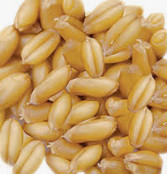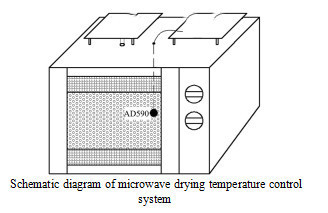Effect of Microwave Drying on Water Transfer in Wheat Grain
The effect of microwave on water migration of wheat grain was studied by microwave drying and low field nuclear magnetic resonance.
The results showed that, due to the uniformity of microwave drying equipment, the moisture content of wheat grain decreased evenly, and the content of bound water and weak bound water decreased evenly, while the content of free water remained basically unchanged. However, the proportion of combined water is basically unchanged, the proportion of weak combined water decreases, and the proportion of free water increases, which is conducive to drying.
Key words: microwave drying of wheat; low field nuclear magnetic resonance; water migration; T2 relaxation time

Wheat is one of the main grain crops in China. Mechanical harvesting is often used in harvesting, and it is in summer. Thunderstorm weather is more, so the moisture content is higher in harvesting. If it is not dried in time, mildew and germination will occur. As a new drying technology, microwave drying has the characteristics of fast heating, convenient control and no pollution, so it can be considered to be applied to grain drying.
Low-field nuclear magnetic resonance (LF-NMR) is a fast, nondestructive and accurate technique to study the distribution and migration of water in food from a microscopic point of view. Nuclear magnetic resonance (NMR) refers to the energy exchange between an atom nucleus with a fixed magnetic moment and an alternating magnetic field under the action of a constant magnetic field and an alternating magnetic field.
The main components of organic matter such as cereals contain a large amount of hydrogen. The content and distribution of hydrogen can be detected by nuclear magnetic resonance technology, so as to know the distribution and state of water.

Under the condition of alternating magnetic field, hydrogen atoms which produce resonance absorption and transition to high energy state emit energy through non-radiative way, and the process of recovering to ground state is called relaxation process. The relaxation processes are spin-lattice relaxation (longitudinal relaxation) and spin-spin relaxation (transverse relaxation), which are expressed by T1 and T2, respectively. Because T2 relaxation time varies widely and is usually more sensitive than T1 relaxation time, T2 relaxation is often used to determine the water holding capacity of systems. In the system with water content of 12%~45%, the T2 relaxation time of hydrogen proton can be measured by using nuclear magnetic resonance of CPMG pulse sequence.
The experiment was conducted to study the water migration in wheat grains by measuring the change of transverse relaxation time T2. Different hydrogen nuclei are located in different environments and have different lateral relaxation time. Water molecules with strong activity have longer relaxation time, and water molecules closely bound to organic macromolecules have shorter relaxation time. In the relaxation time distribution curve of T2, the peak area represents the relative hydrogen proton content in different samples, that is, water content. Therefore, the relative hydrogen proton content of each sample component in the whole system can be obtained by the peak area of T2 relaxation time.